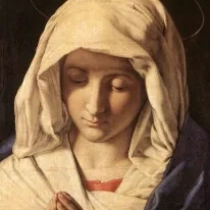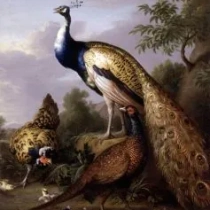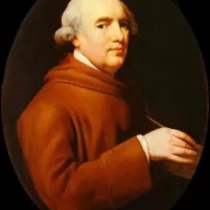The Last Supper
"The Last Supper" by Vicente Juan Macip, a Spanish Renaissance painter, stands as a testament to his profound artistic abilities and his unique interpretation of religious themes. Diverging from the more commonly known rendition by Leonardo da Vinci, Macip's work is imbued with the distinct characteristics of the Spanish Renaissance, marked by a deeper, more intense emotional expression and a strong sense of realism. Macip’s version, although less celebrated globally, offers a remarkable insight into the religious and cultural milieu of Spain during the early 16th century. The painting showcases a remarkable attention to detail, with each apostle distinctly portrayed, reflecting individual reactions to Christ's announcement of betrayal. This depiction is not just a religious iconography; it is a profound study of human emotion and interaction, set against a backdrop of divine narrative.
The composition of Macip's "The Last Supper" is particularly noteworthy. Unlike the linear arrangement in da Vinci's work, Macip employs a more dynamic, somewhat asymmetrical arrangement, bringing a sense of movement and immediacy to the scene. The use of light and shadow in the painting further accentuates this dynamism, highlighting the figures and creating a dramatic effect that draws the viewer into the scene.
Furthermore, Macip's color palette, rich and varied, contrasts sharply with the more muted tones of his Italian contemporaries. This use of color not only enhances the visual appeal of the painting but also serves to convey the emotional intensity of the moment. The reds, blues, and golds used in the garments of the apostles are not merely ornamental but are symbolic, reflecting their status, character, and the gravity of the moment.
In examining "The Last Supper" by Vicente Juan Macip, one is struck by the artist's ability to blend the traditional religious iconography with a palpable humanism. This painting is not just a depiction of a biblical scene; it is a window into the soul of the Renaissance in Spain, a period marked by a deep religious fervor intertwined with a burgeoning interest in humanist ideals and the exploration of the human condition.
In conclusion, while Macip may not enjoy the same renown as some of his contemporaries, his rendition of "The Last Supper" is a masterful work that deserves recognition for its unique approach to a well-trodden subject. It is a vivid portrayal of a pivotal moment in Christian narrative, imbued with a depth of emotion and a mastery of technique that makes it a standout piece in the annals of Renaissance art."







No Comments Yet...